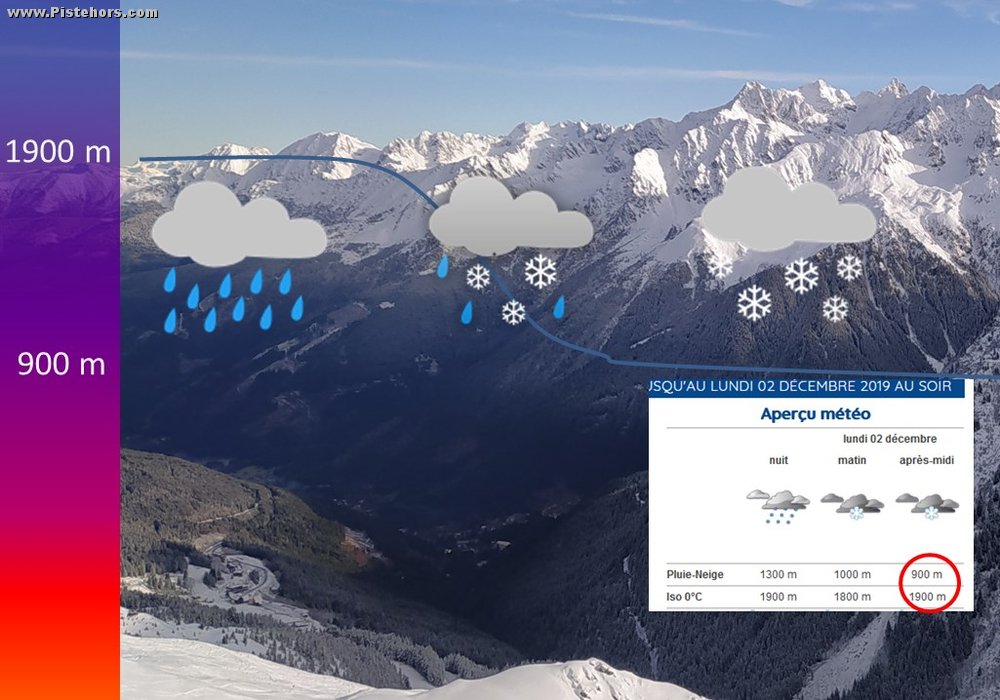Typically the snowline is some 400 meters below the zero isotherm level. So if the zero isotherm (freezing point) is 2000 meters precipitation will fall as snow to 1600 meters. That is because the snow won't instantly melt as it passes through the freezing level. It takes time for the warm air to transfer energy to the snowflakes and melt them. Indeed passing from a solid to liquid state, the phase change, requires energy to break the bonds between molecules but it does not increase the temperature.

If you've been following the weather over the last few days you may have noticed that the zero isotherm was around 1900 meters but snow was falling to 900 meters. What is happening? Surely this is breaking the laws of physics, cap'n?
When precipitation is heavy it takes a lot more energy from the surrounding air to melt the snowflakes. This takes a lot of heat out of the atmosphere which causes a localized cooling, especially if there is no wind to mix up the air. If the temperature of the air below the freezing level is not far above zero the snowflakes can fall a considerable distance before melting. On Sunday the snowline was massive 1000 meters below the zero isotherm. Dense particles such as ice can fall all the way to ground level without melting - hence the phenomenon of summer hailstorms.
The snow that fell below the zero isotherm was wet and heavy. If the atmosphere cools after a storm this can form a solid base for future snowfall but is not particularly agreeable to ski.